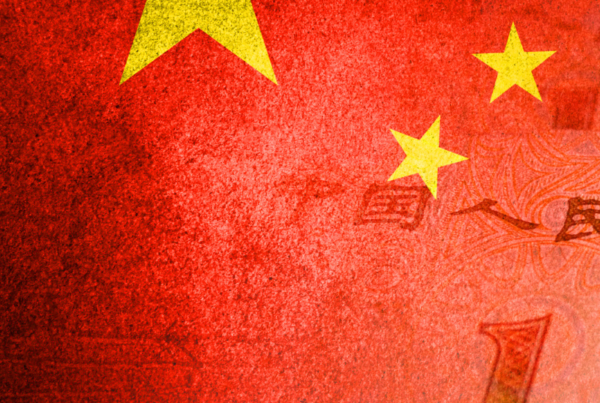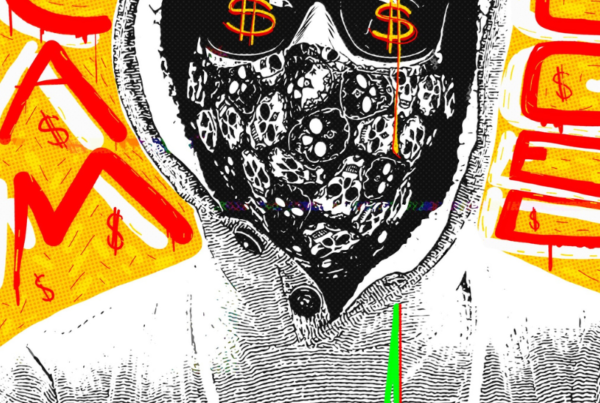While cryptocurrency inevitably rises and falls, it remains an inescapable, innovative part of our future. After all, money – in various forms, from bartering and seashells to metal coins, paper and plastic cards – is subject to change and has matured throughout human history.
Regardless of its many fashions, money (which currently has a global value of more than $400 trillion) is dependent on the priority we all place on it as a recognizable tool for trade; and that is inextricably linked to what is going on in the world. And the world is a volatile place.
Let’s look at the evolution of that thing we know as money and the steady shift to encrypted and decentralized currency as time whirls forward. Whether governments are currently on board or not, transformation is inevitable.
According to the writings of 6th-century Greek poet Xenophanes, Lydia’s King Alyattes minted the Lydian slater – made from a blend of silver, gold and electrum – what historians believe to be the first official currency around 600 BCE. Further, the oldest known standardized spade coin minting site, dating back to around 640 BCE, was recently discovered in China’s Henan Province.
While money in some physical sense has been central to global trade for five thousand years, historians widely conclude that bartering was the main currency for centuries prior. Perhaps a farmer swapped some crops for woven shoes, or a hunter reciprocated a cow from a gatherer for bushels of wheat.

Steadily, a discernible currency came into play for individuals to purchase necessities from weapons and skins to food – increasing the time and efficiency with which they could conduct business.
During 1260 CE, China’s Yuan dynasty transitioned from coins to paper money. It was around 1271 CE that Venetian merchant and explorer Marco Polo crossed Asia’s storied Silk Road and reached China, where his writings revealed a firm grip on the emperor’s power over the money supply, complete with the inscription, “Those who counterfeit will be beheaded.”
On the other hand, much of Europe continued to trade metal coins as the lone currency until the 16th century, when colonial rulers introduced precious metals for greater quality. Later, banks started to complement this process by using paper notes for depositors and borrowers to carry around with greater ease. The notes could be swapped at banks for gold or silver coins. Back then, the government was not responsible for printing, processing, and disseminating currency the way it is now.
Colonial governments in North America were the first to institute paper currency to the European governments they dominated. However, shipments took a long time, and Europe slowly ran out of money, prompting colonial governments – led by the then-French colony of Canada in 1685 – to circulate IOUs that could be accepted and exchanged as cash.
The eventual shift to paper money, however, not only made international commerce faster and more efficient, but also made monarchies and governments more aware that the stability of their rule largely influenced the international status of their national currency.
Cue the beginning of the currency wars. Countries competed to up their own currency and drive down the value of others, lowering an adversary’s ability to start (or fight back) in a war by driving up the cost of their goods. In some cases, this eventually jilted a country’s currency altogether and brought down elite figureheads in the process.
The latter 20th century – and into the 21st – brought about the dramatic overhaul of the long-running currency system by giving rise to virtual currency, aka your credit or debit card. After that came the novel notion of mobile payments, which allows users to wire funds or pay for goods and services through the click of a button or smartphone/tablet device. From PayPal and Venmo to Apple Pay and Google Pay, there are no shortages of newfangled means to conveniently pay and receive funds.
But in 2009, amid the digital revolution, something else extraordinary happened. Bitcoin – backed by radical Blockchain technology – was released by the anonymous Satoshi Nakamoto, fast becoming the standard for the new wave of decentralized virtual currencies and disrupting the money market in many more ways than one.
After centuries of being beholden to one’s centralized government system, users could move money instantly without the traditionally hefty fees, and use currencies mined through technology rather than determined by a governing authority. Bitcoin initiated the establishment of an entirely new money market that embraced vanguard developments and ushered in a new era for finance, albeit with wrinkles still being ironed out.
The advent of the digital money market also led to a boom in wealth for millions of users worldwide, who could for the first time circumvent traditional money intermediaries. Ultimately, the encrypted digital monetary movement served as the great equalizer, reliant upon the collective action of users to self-regulate through a transparent and secure mining process.
Throughout 2020 and 2021, the crypto arena progressed from a fringe interest of anti-establishment investors to seeping into the mainstream money lexicon, and subsequently rose exponentially to a dizzying $3 trillion. In addition, El Salvador became the first country to adopt Bitcoin as its legal tender, alongside USD, its central currency.
However, while crypto bypasses many traditional mechanisms, its value (in line with global monetary norms) depends on what is happening in the volatile world around us. 2022 saw a burst of inflation, a dizzying global dip toward recession, and food and energy shortages due to Russia’s war in Ukraine. As the U.S. stock market has been hit hard, crypto also took a dramatic tumble this year.
But regardless of their current value, subject to leap and dim, analysts still estimate the global crypto market will triple by 2030. Moreover, debate still wages among experts and enthusiasts as to how to make crypto an even more formal means of exchange among ordinary consumers. Some believe government regulation is paramount in building trust and shielding investors and owners from fraud, fallouts and failures. Others contend that government involvement and oversight will only muzzle the modernization of the bullet train pace of cutting-edge Blockchain technology.
All in all, it is futile to accurately surmise where the crypto market will go in 2023. The industry is still in its early – albeit exciting – phase, with developers continuing to fix flaws and countries continuing to shape their approaches.
Yet irrespective of whether government, brands and businesses want to enter the crypto fray, the Blockchain-backed money market is here to stay. As history reminds us, the nature of money never remains the same. And in our ever-innovative world, crypto will continue to carve out a significant position in the future of the global economy.











